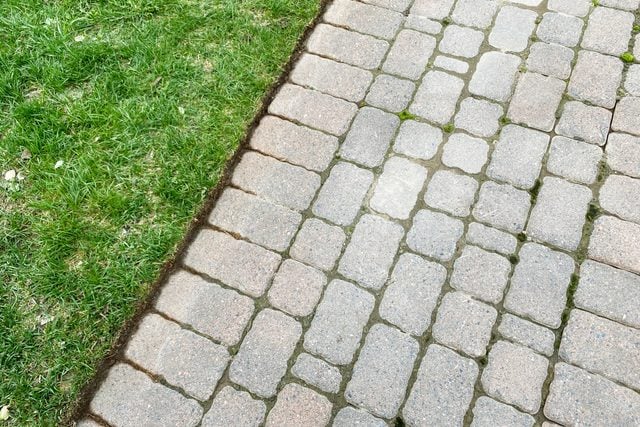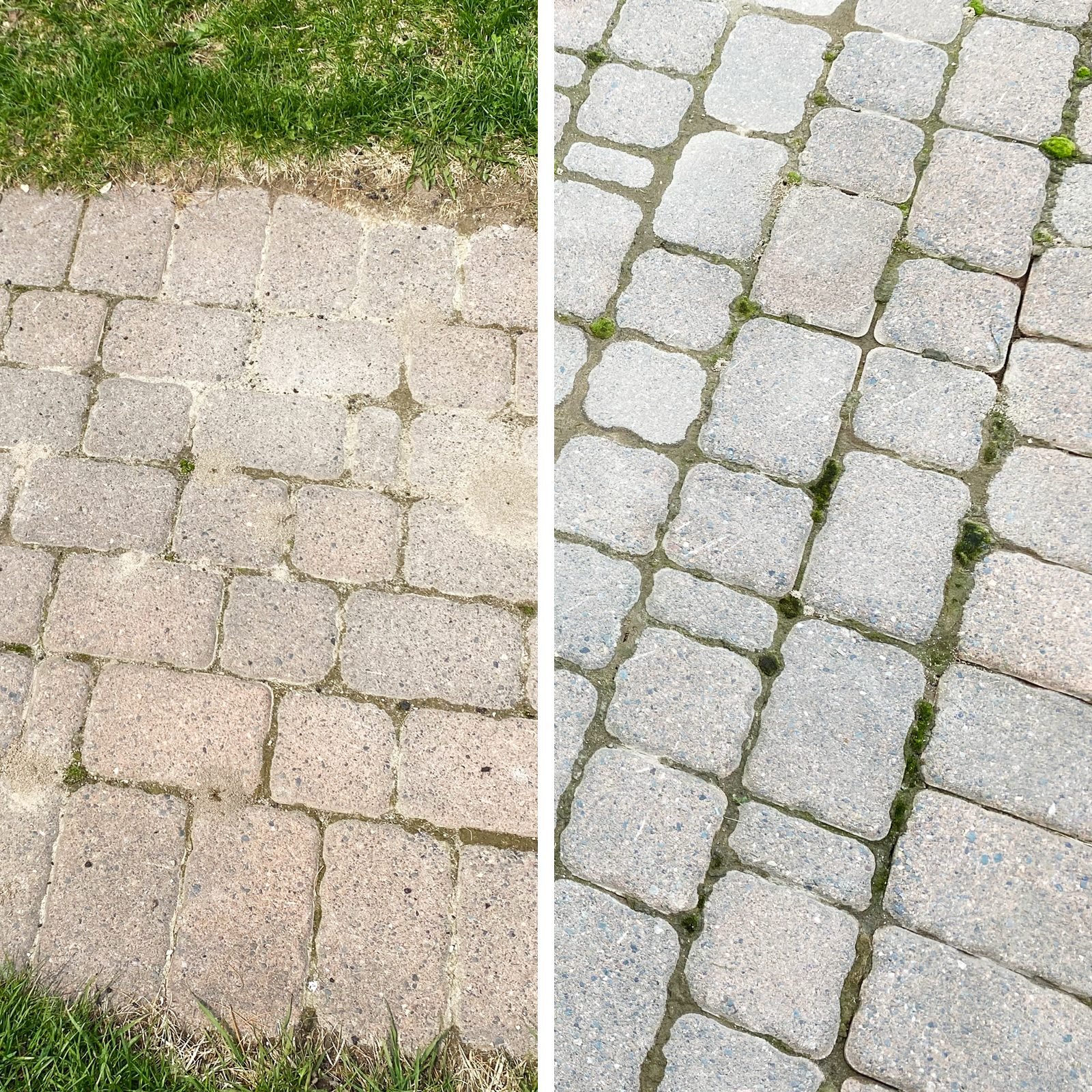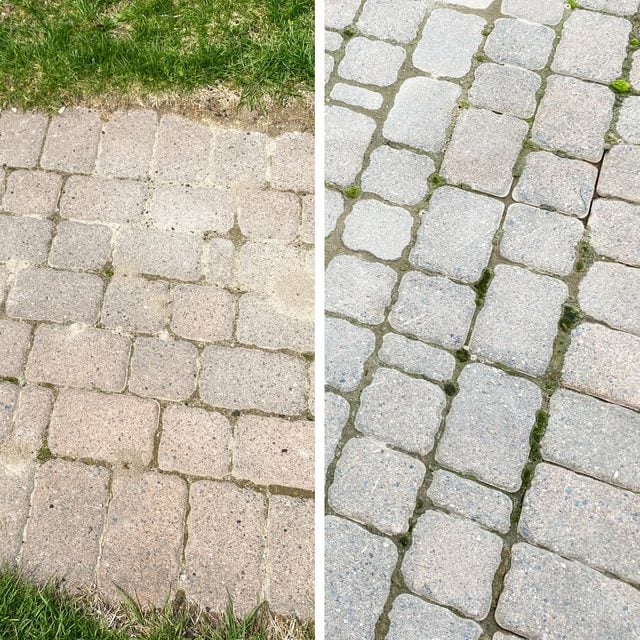How To Clean Pavers
Updated: Jun. 08, 2023
Got some dirty pavers in your garden, patio or walkway? With proper cleaning, they can look as good as new.
1 to 3 hours
Beginner
Up to $20
Introduction
Like all landscaping enhancements, pavers need some ongoing care to continue looking great. Regular cleaning maintains your pavers beautifully. Problem is, pavers come in many different shapes, sizes and materials, and knowing which cleaning approach to use can be tricky.
Here, we'll explain exactly how to clean your pavers, whether they're natural stone, brick or concrete. We'll also show you how to do it without removing any of the sand between the pavers.
I'll demonstrate how to clean brick pavers with a pressure washer, but these steps also apply with other types of pavers.
Tools Required
- Bucket
- Hearing protection
- Hose
- Knee pads
- Pressure washer
- Push broom
- Scrub brush
- Small slot screwdriver
- Spade
Materials Required
- Ant killer
- Dawn dish soap
- Water
Project step-by-step (6)
Clean up the edges
- Examine the perimeter of your paved area, looking for any encroaching grass or weeds.
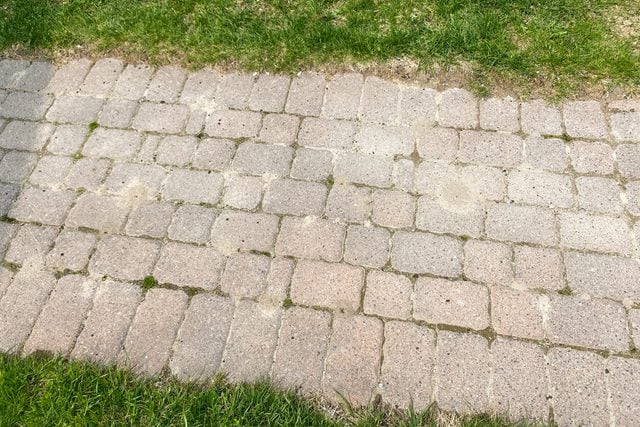
- Use a garden spade to carefully remove all vegetation from around the pavers.
- Be careful to avoid damaging any plastic edging material buried along the outer perimeter of your pavers.
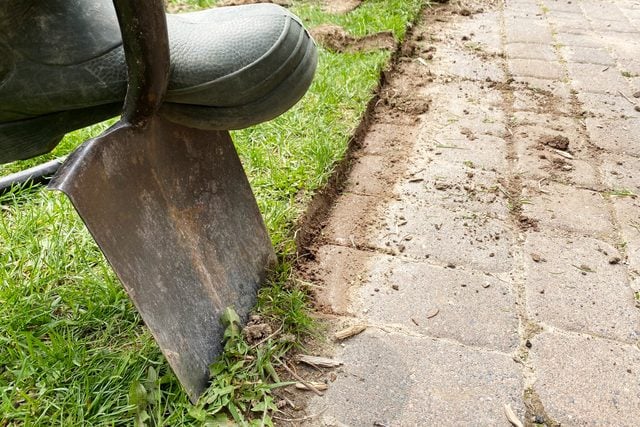
Clean up the joints
- Examine all the joints between your pavers, looking for grass, weeds or moss.
- Use a small slot screwdriver to carefully pick out this unwanted growth, taking care to remove as little of the underlying sand as possible.

- Look for anthills. Spray any you find with ant killer to prevent removal of more sand. (If you take this step, wait at least 24 hours after spraying before washing the pavers.)
Sweep off pavers
- Take a broom and sweep away all loose sand, dirt and debris from your pavers.
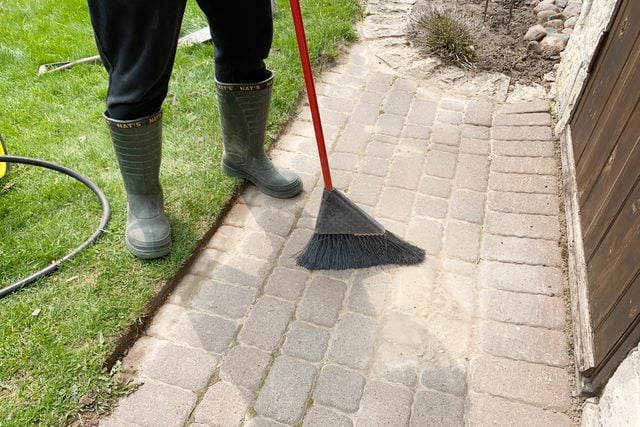
Choose the right pressure washer nozzle
- Fit your pressure washer wand with a less forceful, white 40-degree spray nozzle.

- Do a small test spray in a dirty, out-of-the-way corner of your pavers. Let the area dry fully.
- Examine the test area to see how well it cleaned up. Also, look for any marks or other damage from the pressurized water. If you don’t see any and the area is clean, you’re ready for the next step. If you do see damage, it means your pavers are exceptionally soft and should be washed by hand (more on that later). If there’s no damage but still some dirt or discoloration, repeat the test with a more aggressive green 25-degree nozzle.
Wash the pavers (pressure washer method)
- Put on hearing protection, then slowly spray each paver with your pressure washer for a second or two until it looks clean.
- Avoid lengthy spraying of any particular spot. Doing so could damage your pavers.

- Also, don’t spray directly into joint lines. This will dislodge the sand, which you don’t want.
- Let your pavers dry, then examine for any remaining dirty areas. Wash these as needed.
Wash the pavers (non-pressure washer method)
- If you don’t own a pressure washer or found the spray too aggressive, drizzle some Dawn dish soap into a bucket.
- Fill the bucket with clean water to create a foamy lather.
- Pour some of the soap and water solution onto your pavers. Then put on some kneepads and scrub with a stiff-bristled brush. You could try a stiff-bristled broom to save your knees. But if your pavers have curves or contours, the broom’s bristles may not fully clean them.
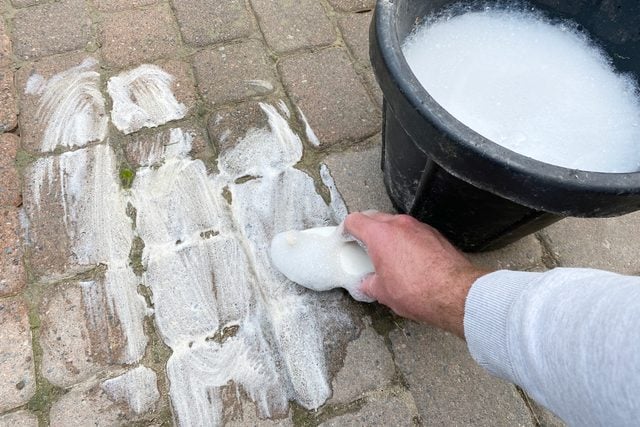
- Avoid scrubbing directly in the joints between pavers, because this will dislodge the sand.
- Continue moving along your paved area washing as you go.
- When finished, rinse the pavers with fresh water from a hose.
